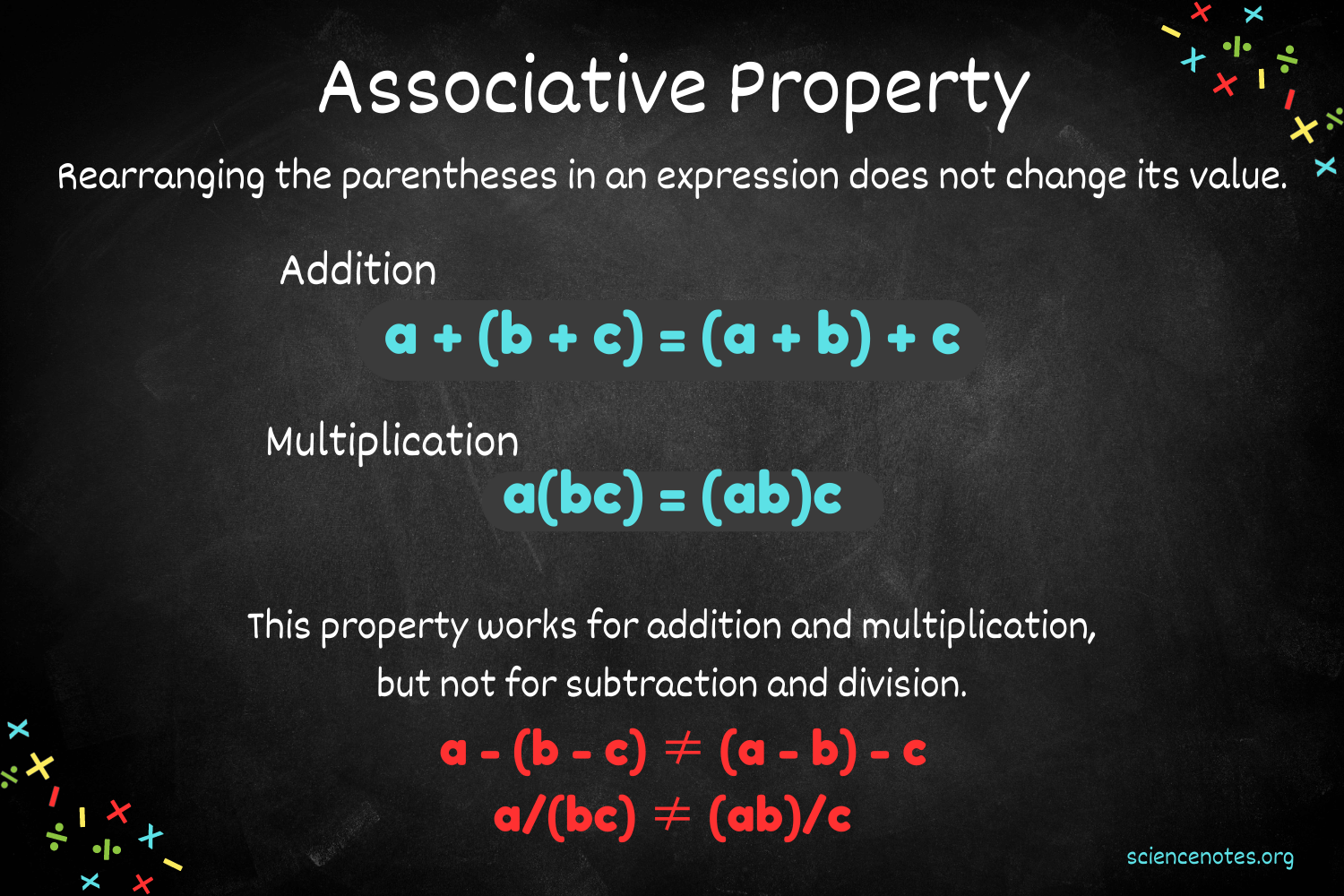Math Properties List

Properties of mathematics are fundamental principles that make mathematical operations and equations valid and consistent. These properties ensure that mathematical operations can be performed in a predictable and reliable manner, allowing us to solve equations and manipulate expressions with confidence. Here’s an extensive list of key mathematical properties across various mathematical operations:
Addition Properties
- Commutative Property of Addition: The order in which you add numbers does not change the result. For example, (a + b = b + a).
- Associative Property of Addition: When you add any three numbers, the grouping (or association) of the numbers does not affect the sum. For example, ((a + b) + c = a + (b + c)).
- Distributive Property of Addition: This property states that for any numbers (a), (b), and (c), (a(b + c) = ab + ac). However, this is more accurately a property of multiplication over addition.
- Additive Identity Property: There is a unique number, 0, known as the additive identity, such that for any number (a), (a + 0 = a).
- Additive Inverse Property: For each number (a), there exists an additive inverse (denoted as (-a)) such that (a + (-a) = 0).
Multiplication Properties
- Commutative Property of Multiplication: The order of the numbers being multiplied does not change the product. For example, (ab = ba).
- Associative Property of Multiplication: The way in which numbers are grouped when multiplying does not affect the product. For example, ((ab)c = a(bc)).
- Distributive Property of Multiplication: For any numbers (a), (b), and (c), (a(b + c) = ab + ac). This property shows how multiplication distributes over addition.
- Multiplicative Identity Property: There is a unique number, 1, known as the multiplicative identity, such that for any number (a), (a \times 1 = a).
- Multiplicative Inverse Property: For each non-zero number (a), there exists a multiplicative inverse (denoted as (1/a) or (a^{-1})) such that (a \times (1/a) = 1).
Properties of Equality
- Reflexive Property of Equality: Any number is equal to itself. For example, (a = a).
- Symmetric Property of Equality: If (a = b), then (b = a).
- Transitive Property of Equality: If (a = b) and (b = c), then (a = c).
- Addition Property of Equality: If (a = b), then (a + c = b + c).
- Subtraction Property of Equality: If (a = b), then (a - c = b - c).
- Multiplication Property of Equality: If (a = b), then (ac = bc).
- Division Property of Equality: If (a = b) and (c \neq 0), then (a/c = b/c).
Properties of Inequalities
Similar to the properties of equality, there are properties of inequalities that follow similar patterns but with considerations for the direction of the inequality.
- Transitive Property of Inequality: If (a < b) and (b < c), then (a < c).
- Addition Property of Inequality: If (a < b), then (a + c < b + c).
- Subtraction Property of Inequality: If (a < b), then (a - c < b - c).
- Multiplication Property of Inequality: If (a < b) and (c > 0), then (ac < bc). However, if (c < 0), then (ac > bc).
- Division Property of Inequality: If (a < b) and (c > 0), then (a/c < b/c). If (c < 0), the inequality sign reverses.
These properties form the foundation of mathematical operations and are used extensively across various fields of mathematics, from simple arithmetic to advanced calculus and beyond. Understanding these properties is essential for performing mathematical operations correctly and for deriving and proving more complex mathematical concepts.


